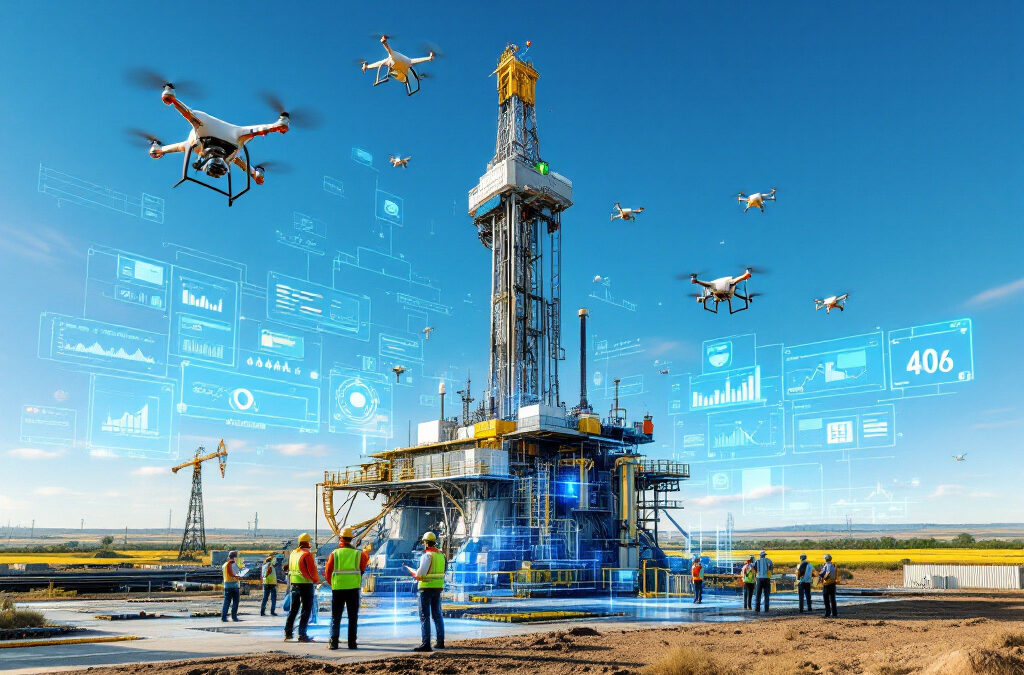Table of Contents
Latest Technologies in Digitalization and Automation for Oil Drilling

The adoption of cutting-edge technologies is revolutionizing Digitalization and Automation for Oil Drilling. Tools like AI (Artificial Intelligence) and IoT (Internet of Things) are enabling real-time monitoring of drilling rigs, while robotics is automating repetitive tasks, reducing human error.
Another game-changer is the use of digital twins, which create virtual replicas of drilling sites to simulate and optimize operations. Predictive analytics is also gaining traction, helping companies anticipate equipment failures and reduce downtime.
Discover how cutting-edge technologies are shaping the future of oil drilling! Check out our latest blog post here: The Future of Drilling Technology
Improving Efficiency and Safety with Digital Tools

Digital tools are making Digitalization and Automation for Oil Drilling safer and more efficient. For example, real-time monitoring systems allow operators to track drilling performance and detect potential issues before they escalate.
Automated drilling systems are reducing the need for manual intervention, minimizing risks to workers. Additionally, remote operations are becoming more common, enabling teams to manage rigs from centralized locations, even in harsh environments like the Permian Basin.
The Role of Data Analytics in Oil Drilling

Data analytics is at the heart of Digitalization and Automation for Oil Drilling. By analyzing vast amounts of data, companies can optimize drilling performance and reduce costs.
For instance, predictive maintenance uses data to identify when equipment is likely to fail, allowing for timely repairs. Reservoir modeling helps operators understand underground formations, improving drilling accuracy and resource extraction.
To stay updated on the latest advancements and insights in the oil and gas industry, follow the latest Oil and Gas Industry News on Energy Workforce.
Challenges in Implementing Digital Solutions
While the benefits of Digitalization and Automation for Oil Drilling are clear, there are challenges to overcome. High implementation costs can be a barrier, especially for smaller companies.
Cybersecurity risks are another concern, as digital systems are vulnerable to attacks. Additionally, workforce adaptation is critical—employees need training to work with new technologies effectively.
Stay safe and efficient on the rig! Check out our blog for the Ultimate 7 Safety Tips for Oil Drilling.
Integrating Sustainability with Digitalization

Industry leaders are using Digitalization and Automation for Oil Drilling to align with sustainability goals. For example, AI-driven systems can optimize energy use, reducing carbon emissions.
Automation also helps minimize waste by improving drilling precision. Companies like Norton Energy Drilling are leveraging these tools to balance operational efficiency with environmental responsibility.
Conclusion: The Future of Oil Drilling
Digitalization and Automation for Oil Drilling are transforming oil drilling operations, offering solutions to improve efficiency, safety, and sustainability. By adopting technologies like AI, IoT, and predictive analytics, companies can stay ahead in a competitive industry.
However, challenges like costs and cybersecurity must be addressed to fully realize the potential of these advancements. As industry leaders like Norton Energy Drilling continue to innovate, the future of Digitalization and Automation for Oil Drilling looks brighter than ever.



Recent Comments